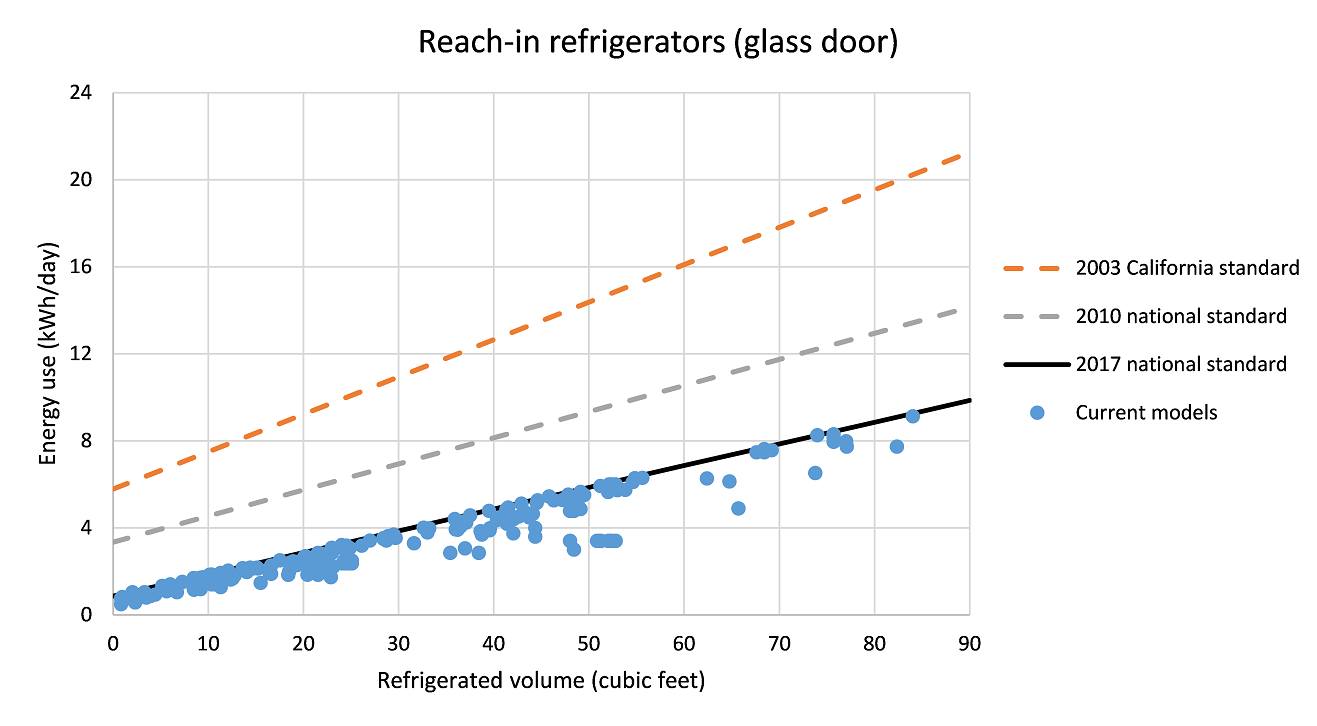New efficiency standards that took effect today will save money for restaurants, supermarkets, convenience stores, and other businesses that use commercial refrigerators and freezers.
New efficiency standards that took effect today will save money for restaurants, supermarkets, convenience stores, and other businesses that use commercial refrigerators and freezers. Manufacturers have introduced new products that not just meet the new standards, but in some cases are significantly more efficient than what the minimum standards require.
Commercial refrigerators and freezers include “reach-ins,” which have either solid or glass doors and are typically used in food-service establishments, and refrigerated display cases, which are commonly used in supermarkets.
California established the first efficiency standards for commercial refrigerators and freezers, which took effect in 2003. The first national efficiency standards, which were negotiated by manufacturers and efficiency advocates, were enacted as part of the Energy Policy Act (EPAct) of 2005 and took effect in 2010. EPAct 2005 also directed the Department of Energy (DOE) to update the initial standards and expand the scope. The new standards that took effect today were finalized in 2014.
As can be seen in the graph below, a typical glass-door reach-in refrigerator just meeting the 2017 standards uses about 40% less energy than the 2010 standards, and about 60% less energy than the first California standards. While a 40 cubic foot glass-door reach in-refrigerator just meeting the 2003 California standard used more than 12 kilowatt-hours (kWh) per day and one just meeting the 2010 national standard used about 8 kWh/day, a refrigerator just meeting the 2017 standard uses less than 5 kWh/day. A business that pays 10 cents/kWh for electricity would spend about $462 per year to operate a 2003 vintage unit but just $177 to operate a new unit, saving more than $285 a year.

Note: Data on current models are from the DOE Certification Compliance Database as of March 20, 2017.
The graph also shows that many current products on the market are not just meeting, but beating the 2017 standards. The most efficient glass-door reach-in refrigerators use almost 50% less energy than products just meeting the 2017 standards. For example, while a 48 cubic foot refrigerator just meeting the 2017 standards uses 5.7 kWh/day, the most efficient 48 cubic foot refrigerators use just 3.0 kWh/day.
The performance of new super-efficient reach-in refrigerators is possible in large part due to new refrigerants—in particular propane (R290). Under EPA’s Significant New Alternatives Policy (SNAP) program, the two most common refrigerants used in commercial refrigerators and freezers (R134a and R404A) will be phased out by 2020. Propane is an attractive replacement refrigerant for many commercial refrigeration applications because in addition to having zero ozone depletion potential (ODP) and near-zero global warming potential (GWP), propane also provides significantly better efficiency performance than R134a and R404A.
In addition to new refrigerants, manufacturers are also employing technologies such as LED lighting, high-efficiency fan motors, and high-performance glass doors to improve the efficiency of commercial refrigerators and freezers.
DOE estimates that products meeting the new commercial refrigeration standards sold over 30 years will reduce US electricity consumption by about 340 billion kWh, which is equivalent to the annual electricity use of 28 million US households, and save businesses up to $12 billion.
The energy savings from the new standards will translate into big electricity bill savings for businesses that purchase commercial refrigeration equipment. For example, DOE estimates that the new standards will save purchasers of glass-door reach-in refrigerators and freezers about $225 and $5,000, respectively, over the life of the equipment. Purchasers of supermarket glass-door refrigerator and freezer cases are set to save more than $500 over the lifetime of a single case, and a typical supermarket has about 60 refrigerated display cases.
The new standards for commercial refrigeration equipment have encouraged manufacturer innovation to introduce products that not just meet, but beat the standards, and will result in large savings for the food sales and food services businesses that buy and use these products.





